A guide to long and short selling of digital currencies
php editor Youzi will introduce you to the long and short operation process of digital currency. In digital currency trading, going long means expecting prices to rise, and going short means expecting prices to fall. A long operation means buying digital currency, and a short operation means borrowing digital currency and selling it. The operation process includes steps such as selecting an exchange, registering an account, recharging funds, selecting a trading pair, placing an order to buy or sell, etc. Before conducting long or short operations on digital currencies, please understand the relevant risks and formulate a reasonable trading strategy, and operate with caution. Please continue reading this article for detailed operation procedures.

How to do long and short selling of digital currencies?
The long and short operations of digital currencies are simple and easy to understand. Taking Ouyi OKX Exchange as an example, the following is an explanation of the operation process:
1. Open Ouyi Exchange (new users can directly click to register for trading), click [Asset Management] - [Funds] in the upper right corner Transfer】
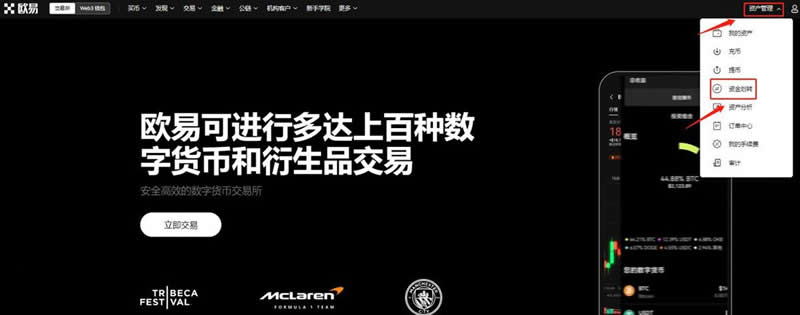
#2. Select the currency, take [USDT] as an example—from [Capital Account]—to [Trading Account]—enter the transfer [amount]— 【Sure】.
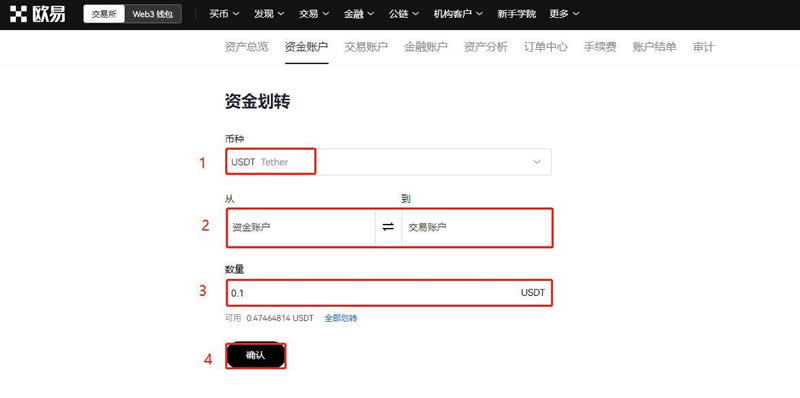
#3. Click [Trading] - [Leverage] in the upper left corner of the official website homepage.
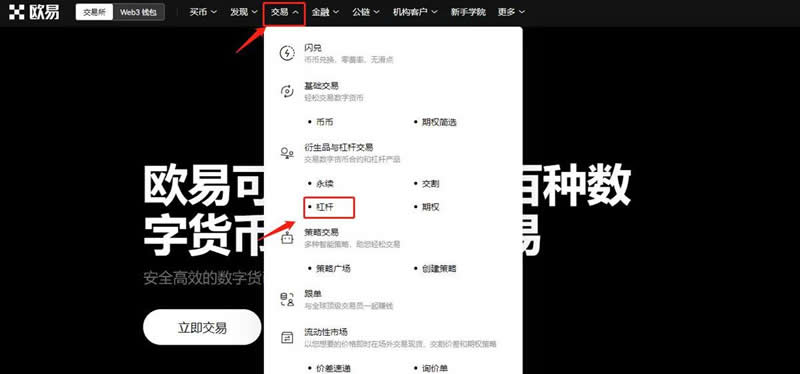
#4. Click the settings icon in the upper right corner of the transaction page - [Transaction Settings] - select [Account Mode], [Transaction Unit] and other options to set up.
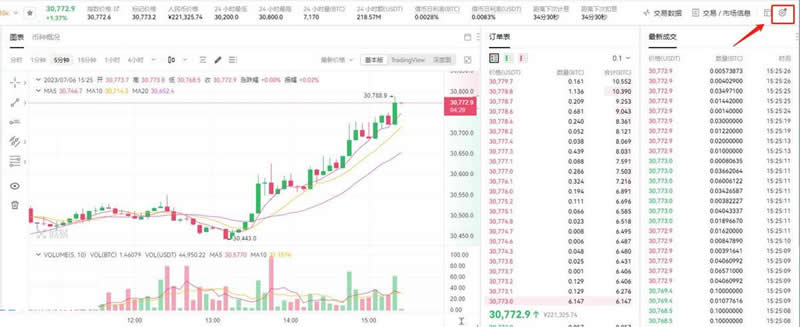
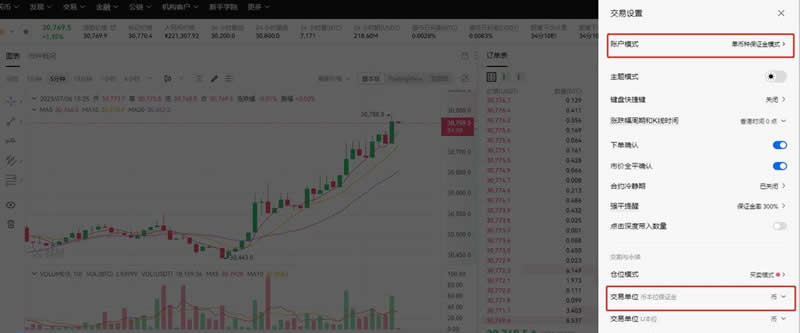
5. Take ETH/USDT margin trading as an example: select [Leverage]-[USDT]-[ETH/USDT].
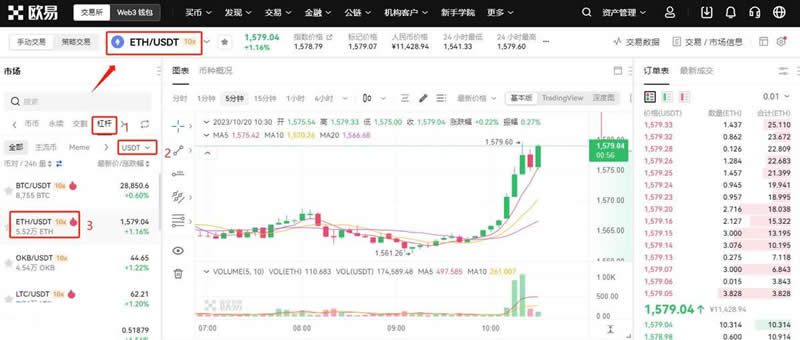
6. Select [Full Margin/Isolated Margin], [USDT Margin], [Leverage Multiple], [Limit Price Order] - Enter [Price], [Quantity] Or [Amount] - click [Buy (Long) ETH] - [Confirm].
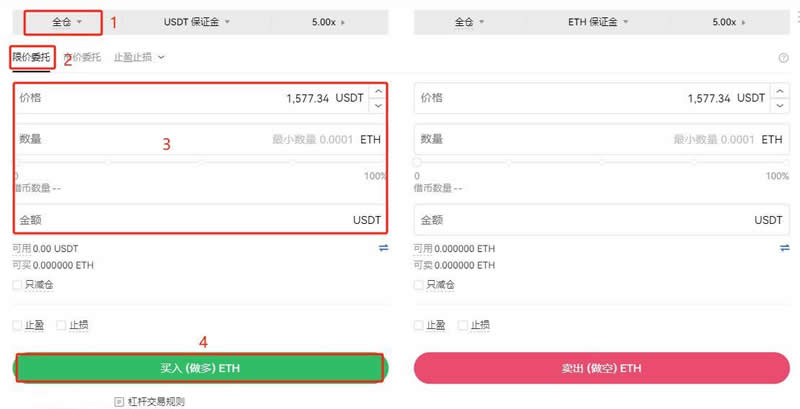
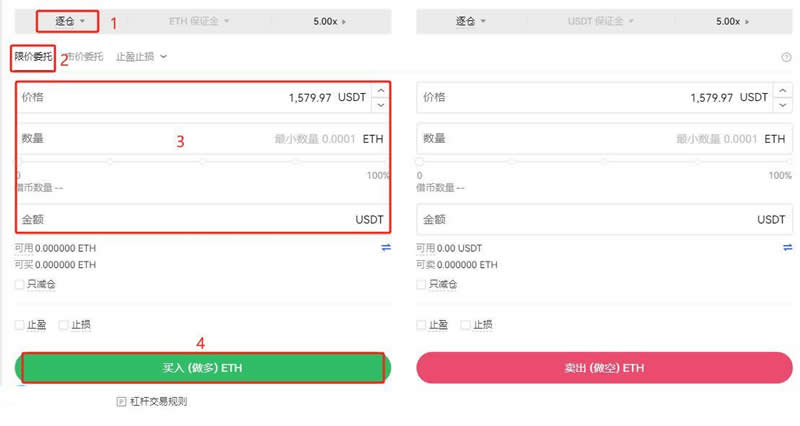
7. Take ETH/USDT margin trading as an example: click [Trading] - [Leveraged Contract Trading] - in the upper left corner of the official website homepage Enter the trading page, click on the coin pair box [ETHUSD Perpetual] in the upper left corner; on the new page, click to switch the trading mode - [Leverage] - [USDT] - select [ETH/USDT].
Select [Cross Margin/Isolated Margin], [USDT Margin], [Leverage Multiple], [Limit Price Order] - Enter [Price], [Quantity] or [Amount] - Click [Sell (Short) )ETH]—[Confirm].

What is the difference between long and short digital currencies?
Going long and shorting in the digital currency market are two different trading strategies that involve investing in different directions in asset prices.
Going long is a bullish trading strategy in which investors believe the price of a digital currency will rise. In a long trade, investors buy a digital currency and then wait for the price to rise before selling it, making a profit.
Longs gain from rising prices, so they want the market to show strong growth.
Short selling is a bearish trading strategy in which investors believe the price of a digital currency will fall. In a short-selling trade, investors borrow digital currency (usually borrow and sell it) and then wait for the price to fall before repurchasing it at a profit.
Short sellers gain from falling prices, so they hope the market shows weakness or a downward trend.
The above is the detailed content of A guide to long and short selling of digital currencies. For more information, please follow other related articles on the PHP Chinese website!

Hot AI Tools

Undresser.AI Undress
AI-powered app for creating realistic nude photos

AI Clothes Remover
Online AI tool for removing clothes from photos.

Undress AI Tool
Undress images for free

Clothoff.io
AI clothes remover

Video Face Swap
Swap faces in any video effortlessly with our completely free AI face swap tool!

Hot Article

Hot Tools

Notepad++7.3.1
Easy-to-use and free code editor

SublimeText3 Chinese version
Chinese version, very easy to use

Zend Studio 13.0.1
Powerful PHP integrated development environment

Dreamweaver CS6
Visual web development tools

SublimeText3 Mac version
God-level code editing software (SublimeText3)

Hot Topics
 1389
1389
 52
52
 Ranking of the top ten trading platforms in the currency circle. List of professional selections for virtual digital currency trading platforms in 2025
Apr 20, 2025 pm 03:57 PM
Ranking of the top ten trading platforms in the currency circle. List of professional selections for virtual digital currency trading platforms in 2025
Apr 20, 2025 pm 03:57 PM
Ranking of the top ten trading platforms in the currency circle: OKX ranks first with its derivatives advantage, Binance follows closely with its maximum trading volume, and Gate.io ranks third for its rapid launch of new tokens. The rest are Bybit (derivative expert), KuCoin (user-friendly), Bitget (order transactions), HTX (old platform), MEXC (low handling fees), Kraken (European and American compliance) and Coinbase (preferred choice for institutions).
 Recommended top ten digital currency APPs in the world (authoritative release in 2025)
Apr 21, 2025 pm 12:09 PM
Recommended top ten digital currency APPs in the world (authoritative release in 2025)
Apr 21, 2025 pm 12:09 PM
The world's leading ten digital currency apps include: 1. OKX, 2. Binance, 3. Huobi, 4. Matcha (MXC), 5. Bitget, 6. BitMEX, 7. Pionex, 8. Deribit, 9. Bybit, 10. Kraken. These platforms have their own characteristics in security, transaction services, technical architecture, risk control team, user experience and ecosystem.
 Popular science in the currency circle: How much can a Bitcoin be exchanged for? Where to redeem?
Apr 21, 2025 pm 12:00 PM
Popular science in the currency circle: How much can a Bitcoin be exchanged for? Where to redeem?
Apr 21, 2025 pm 12:00 PM
In China, transactions of Bitcoin exchange for domestic money are not allowed. In other countries and regions where transactions are allowed, exchanges can be carried out through the following platforms: 1. Binance, 2. Ouyi (OKX), 3. Huobi (Huobi).
 Gate.io Sesame Open Exchange Tips for Buying and Selling Coins (Guide to Novice)
Apr 21, 2025 am 11:51 AM
Gate.io Sesame Open Exchange Tips for Buying and Selling Coins (Guide to Novice)
Apr 21, 2025 am 11:51 AM
Tips for buying and selling coins on Gate.io include: 1. Make research plans before buying coins to understand the market and risks; 2. Choose trading pairs with high liquidity such as BTC/USDT; 3. Use limit orders to control the buying cost; 4. Pay attention to market trends and analyze price trends; 5. Set stop-profit and stop-loss when selling coins, and manage risks; 6. Use batch selling strategies to balance returns and risks; 7. Combine market sentiment and judge the selling timing; 8. Pay attention to macroeconomic and policy changes, and adjust strategies in a timely manner.
 How to choose a virtual currency exchange app? 2025 Crypto Circle App Exchange Authoritative Ranking
Apr 21, 2025 pm 12:33 PM
How to choose a virtual currency exchange app? 2025 Crypto Circle App Exchange Authoritative Ranking
Apr 21, 2025 pm 12:33 PM
Against the backdrop of the rapid development of today's digital currency market, choosing a reliable exchange app has become the top priority of every investor. The authoritative rankings of the 2025 CNY App Exchange provide you with a detailed guide to help you find the platform that suits you the most among the many options. We will evaluate from multiple dimensions such as security, user experience, handling fees, and transaction volume to ensure that you can find a safe, convenient and efficient trading platform. Next, let’s take a look at what are the top three exchange apps.
 2025 trading platform app that can buy digital currency latest version
Apr 21, 2025 pm 12:30 PM
2025 trading platform app that can buy digital currency latest version
Apr 21, 2025 pm 12:30 PM
In today's digital economy era, cryptocurrencies have become the focus of investors and traders. This article will introduce you in detail the ranking of the world's most popular digital currency trading platforms in 2025 to help you make wise choices. These platforms not only provide a variety of cryptocurrency trading pairs, but also have efficient trading systems and powerful security measures. Let's take a deeper understanding of the characteristics and advantages of these top trading platforms.
 The authoritative ranking of the top ten digital currency app exchanges in the currency circle in 2025
Apr 20, 2025 pm 05:45 PM
The authoritative ranking of the top ten digital currency app exchanges in the currency circle in 2025
Apr 20, 2025 pm 05:45 PM
The top ten digital currency exchanges in the currency circle: 1. OKX, 2. Binance, 3. Gate.io, 4. Coinbase, 5. Bybit, 6. Kraken, 7. KuCoin, 8. Bitget, 9. MEXC, 10. HTX, each performs outstandingly in the world's top digital asset platforms, daily trading volume, ten-year-old exchanges, Nasdaq listing, derivative trading volume, bank-level asset custody, innovative currency, order-study systems, innovation zone projects, Huobi brand upgrades, etc.
 Top 10 cryptocurrency exchanges ranked in the top 10 digital currency exchanges latest list
Apr 21, 2025 am 10:30 AM
Top 10 cryptocurrency exchanges ranked in the top 10 digital currency exchanges latest list
Apr 21, 2025 am 10:30 AM
The top ten cryptocurrency exchanges in 2025 are: 1. Binance, 2.Bybit, 3.OKX, 4.Coinbase, 5.Kraken, 6.HTX, 7.Gate.io, 8.KuCoin, 9.Crypto.com, 10.BitMEX. These exchanges have their own characteristics to meet the needs of different users.



